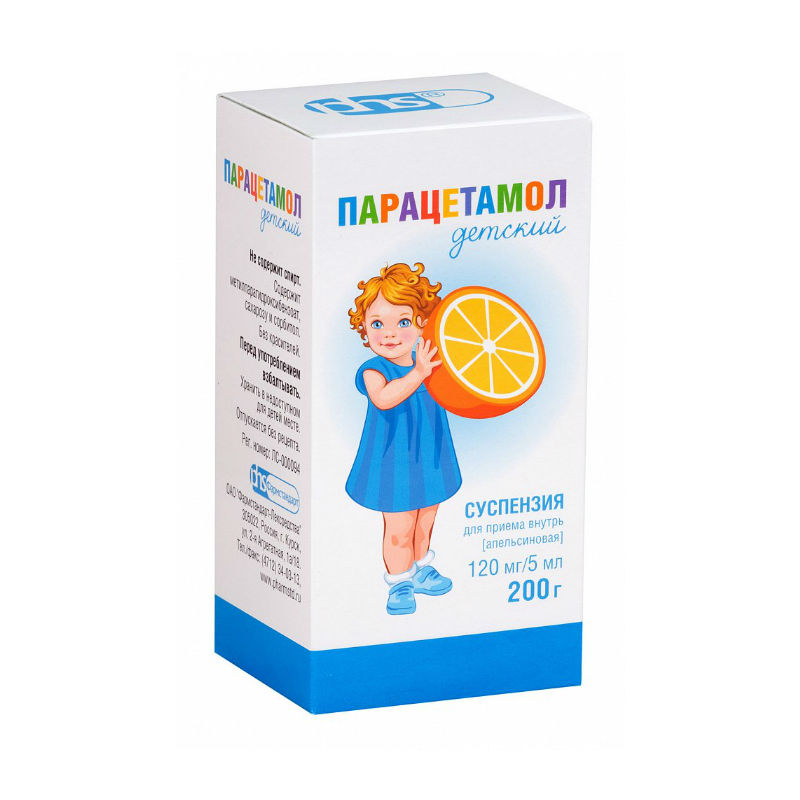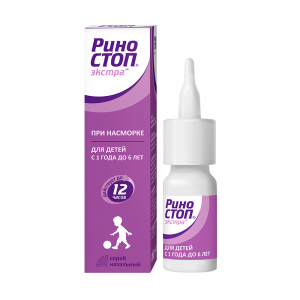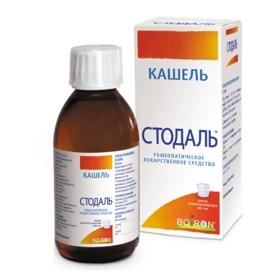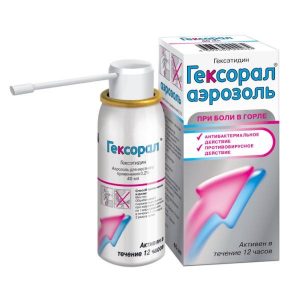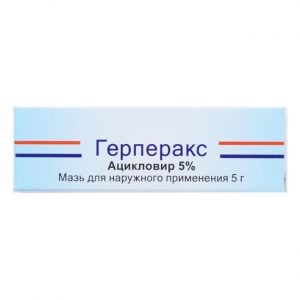Description
Release form
Suspension for oral administration.
Pharmacological action of
Pharmacotherapeutic group: analgesic non-narcotic drug
ATX code: [N02BE01]
Pharmacological properties of
Pharmacodynamics. Non-narcotic analgesic, has analgesic and antipyretic effects.
The drug blocks cyclooxygenase 1 and 2 in the central nervous system, affecting the centers of pain and thermoregulation. In inflamed tissues, cellular peroxidases neutralize the effect of paracetamol on cyclooxygenase, which explains the absence of a significant anti-inflammatory effect. The drug does not adversely affect water-salt metabolism and the mucous membrane of the gastrointestinal tract.
Pharmacokinetics. Absorption is high, the time to reach the maximum concentration is 0.5-2 hours, the maximum concentration is 5-20 μg / ml. Communication with plasma proteins – 15%. Penetrates through the blood-brain barrier. Less than 2% of the dose taken by the nursing mother passes into breast milk. The therapeutic effective concentration of paracetamol in plasma is achieved when it is used in a dose of 10-15 mg / kg. It is metabolized in the liver: 80% undergoes a conjugation reaction with glucuronic acid and sulfates to form inactive metabolites, 17% undergoes hydroxylation with the formation of 8 active metabolites, which conjugate with glutathione, and then with cysteine and mercapturic acid and form inactive metabolites. The main isoenzymes of cytochrome P450 for this metabolic pathway are the isoenzyme CYP2E1 (mainly), CYP1A2 and CYP3A4 (secondary role). With a lack of glutathione, these metabolites can block the hepatocyte enzyme systems and cause their necrosis.
Additional metabolic pathways include hydrooxidation to 3-hydroxyparacetamol and methoxylation to 3-methoxyparacetamol, which are subsequently conjugated with glucuronic and sulfuric acid.
In adults, glucuronidation predominates, in newborns (including premature babies) and young children – sulfation. Conjugated metabolites of paracetamol (glucuronides, sulfates and conjugates with glutathione) have low pharmacological (including toxic) activity.
The elimination half-life is 2-3 hours. Within 24 hours, 85-95% of paracetamol is excreted by the kidneys in the form of glucuronides and sulfates, 3% – unchanged. In elderly patients, paracetamol clearance decreases and the elimination half-life increases.
Indications
Mild to moderate pain, fever for infectious and inflammatory diseases (including viral infections), post-vaccination hyperthermia.
Use during pregnancy and lactation
Paracetamol crosses the placental barrier. To date, there has been no adverse effect of paracetamol on the fetus in humans.
Paracetamol is excreted in breast milk: the content in milk is 0.04-0.23% of the dose taken by the mother.
If you need to use paracetamol during pregnancy and lactation (breastfeeding), you should carefully weigh the expected benefits of therapy for the mother and the potential risk to the fetus or child.
In experimental studies, no embryotoxic teratogenic and mutagenic effects of paracetamol.
Special instructions
The simultaneous use of paracetamol with other paracetamol-containing drugs should be avoided, as this may cause an overdose of paracetamol.
When using the drug for more than 5 days, peripheral blood counts and the functional state of the liver should be monitored.
The drug contains sucrose and sorbitol, which should be considered when treating patients with diabetes mellitus (5 ml of the suspension contain 0.25 bread units).
Paracetamol distorts the results of laboratory studies of glucose and uric acid in blood plasma.
If you continue to have fever for more than 3 days and pain for more than 5 days, you should consult your doctor.
Effect on ability to drive vehicles,
mechanisms The drug does not affect the ability to drive a car or manage various mechanisms, as well as engage in other potentially dangerous activities that require increased attention and speed of mental and motor reactions.
Composition
Active substance: paracetamol – 120 mg.
Excipients: Avicel RC-591 [microcrystalline cellulose, sodium carmellose] – 50 mg, xanthan gum (xanthan gum) – 7.5 mg, methyl parahydroxybenzoate (nipagin) – 5 mg, propylene glycol – 1 mg, sucrose (sugar) – 1650 mg, glycerol (glycerin) – 630 mg, sorbitol (food sorbitol) – 1128.75 mg, orange flavor or strawberry flavor – 6.5 mg, water (purified water) – up to 5 ml.
Dosage and administration of
5 ml of the suspension contains 120 mg of paracetamol. In one bottle, the number of doses of 5 ml is: in 100 g – 16 doses, in 150 g – 24 doses and in 200 g – 32 doses.
The drug is taken orally before meals undiluted, with plenty of fluids. Shake well before use. Multiplicity of admission is not more than 4 times a day with an interval of at least 4 hours.
The dose of paracetamol for children is calculated based on age and body weight. A single dose of paracetamol is 10-15 mg / kg body weight, daily – not more than 60 mg / kg body weight.
For accurate dosing of the drug, depending on the offered equipment, use a measuring spoon or measuring syringe, enclosed in the package.
When using a syringe: 1. Shake the suspension thoroughly.
2. Open the bottle cap.
3. Firmly insert the measuring syringe into the hole of the adapter installed in the neck of the bottle.
4. Turn the bottle upside down and gently pull the piston down, collecting the suspension into the measuring syringe to the desired level.
5. Return the vial to its original position and remove the measuring syringe by carefully turning it.
6. Give the drug to the child inside with a measuring syringe. To ensure a smooth flow of the suspension into the oral cavity, slowly press the piston.
After each use, flush the measuring syringe in running water and dry disassembled at room temperature out of the reach of the child.
Store the measuring syringe in the package with the drug.
Depending on the age, Paracetamol Pediatric is prescribed in the following single doses: – from 1 to 3 months – for the symptomatic treatment of vaccination reactions, a single dose of 2.5 ml of the suspension is used. If necessary, the dose can be repeated, but not earlier than after 4 hours. If the child s body temperature does not decrease after a repeated dose, consult a doctor. Further use of the drug in children of this age for the treatment of post-vaccination hyperthermia, as well as the use in children aged 1-3 months according to other indications is possible only under the supervision of a doctor. If it is necessary to use the drug for a premature baby aged 1-3 months, the drug is prescribed only on the recommendation of a doctor.
– from 3 months to 1 year – 2.5-5 ml or 60-120 mg of paracetamol, depending on the body weight of the child (see table below)
– from 1 year to 6 years – 5-10 ml or 120-240 mg depending on the body weight of the child (see table below)
– from 6 to 14 years old – 10-20 ml or 240-480 mg depending on the body weight of the child (see table below)
Child body weight Single dose of the drug
4-8 kg 2.5 ml
8-16 kg 5 ml
16-32 kg 10 ml
more than 32 kg 15-20 ml
– for adults – a single dose of 20 ml no more than 4 times a day.
Duration of treatment is not more than 3 days as an antipyretic and not more than 5 days as an anesthetic. Continuation of treatment with the drug is possible only after consultation with a doctor !!!
Do not exceed the prescribed dose! An overdose of paracetamol can be the cause of liver failure.
Side effects
Nausea, vomiting, abdominal pain. Allergic reactions (including skin rash, itching, urticaria, Quincke edema), leukopenia, agranulocytosis, thrombocytopenia.
With prolonged use in large doses – hepatotoxic and neurotoxic (interstitial nephritis and papillary necrosis), hemolytic anemia, aplastic anemia, methemoglobinemia, pancytopenia.
Drug interaction
Inductors of microsomal oxidation in the liver (phenytoin, ethanol, barbiturates, flumecinol, rifampicin, phenylbutazone, tricyclic antidepressants) increase the production of hydroxylated active metabolites, which makes it possible to develop hepatotoxic effects with small overdoses.
Microsomal oxidation inhibitors (including cimetidine) reduce the risk of hepatotoxicity.
The simultaneous long-term administration of high doses of paracetamol and salicylates increases the risk of developing kidney or bladder cancer. The combination with chloramphenicol leads to an increase in the toxic properties of the latter.
Enhances the effect of indirect anticoagulants and reduces the effectiveness of uricosuric drugs.
Prolonged use of barbiturates reduces the effectiveness of paracetamol.
Myelotoxic drugs increase the hematotoxicity of paracetamol.
Ethanol contributes to the development of acute pancreatitis.
Long-term combined use of paracetamol and non-steroidal anti-inflammatory drugs increases the risk of developing analgesic nephropathy and renal papillary necrosis, the onset of end-stage renal failure.
Diflunisal increases the plasma concentration of paracetamol by 50% – the risk of hepatotoxicity.
Storage Conditions
Do not store above 25 ° C. Do not freeze!
Keep out of the reach and sight of children.
Expiration
3 years.
active substance
Paracetamol
Pharmacy terms
Without a prescription
lekarstvennaja form
suspensions for pryema inside
Prescribing
For children over 3 months old
Indications
Indications
Colds, SARS, Flu
Pharmstandard-Leksredstva, Russia
